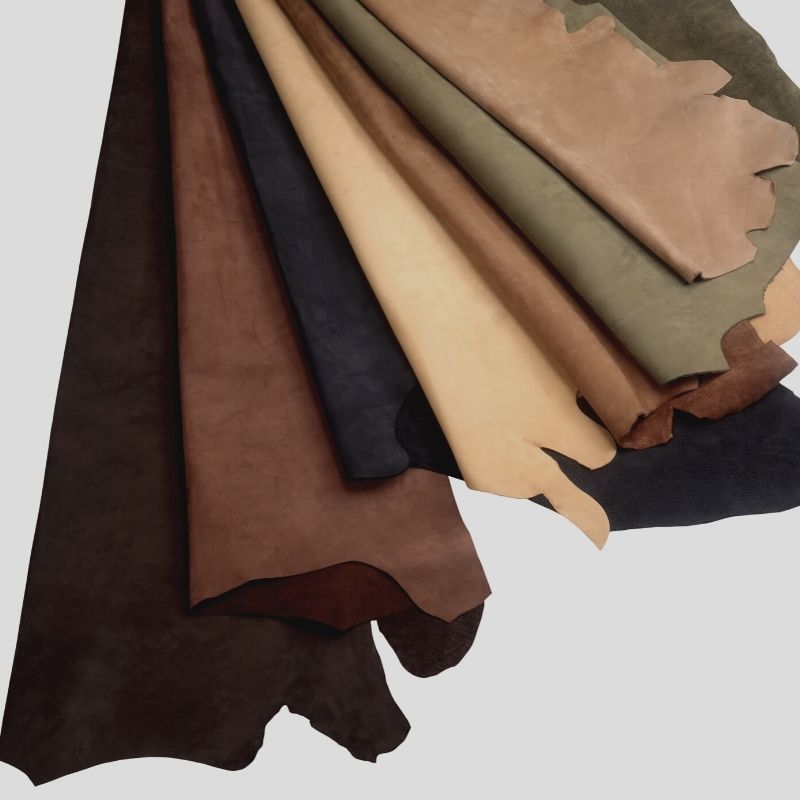Choosing Upholstery Leather: Real vs Synthetic

Buying new furniture is no joke these days. It can be very expensive, especially if you are looking for quality. Many people opt to re-upholster pieces they already own or find second-hand. It may cost you less to add quality products to your existing furniture. But it also comes with its own challenges, especially if you decide to use upholstery leather: real or synthetic.
Being in the upholstery business teaches you a few things. And trust me, even a long-time business owner has to learn the hard way at times. The good news is that bad experiences help you learn. And in turn, it guarantees that we can give our customers the best advice.
So here is what you should know about choosing upholstery leather
First off, synthetic upholstery leather can be just as durable as genuine leather. While there are some dubious products on the market, if you know what to look for, you could easily find great quality.
And well, if you are vegan or environmentally conscious, then synthetic leather will probably be more appealing to you. But that’s a subject for another article.

Genuine Upholstery Leather
All genuine upholstery leather comes in sheets of varying sizes and is usually bovine (cow). It will never come in linear meters on a neat roll. I repeat NEVER! I see a lot of customers come into the store expecting genuine leather to look like any other material or fabric. They are often surprised by what they find.
These sheets come straight off the animal and are called hides. They have a very distinct shape, and each sheet differs in size.
This is what you should look for:
- The texture of leather is unmistakable. The bottom should look like the picture below.
- Since it is a natural product, there will always be some blemishes and holes.
- If you push your finger into the leather you’ll notice that it is pliable and will wrinkle, similar to skin.
- Leather has a very distinct smell. This should also be an indicator of whether your leather is real or not.
- Hides can be dyed any colour and are treated to have different embossing and textures.
- We usually advise customers to buy softer leather for their furniture. It is more comfortable to sit on, and in some cases, is also easier to stitch.

How do I know what Synthetic Upholstery Leather to buy?
Like I mentioned before, not all synthetic leather is a no-go. Some are made to be as durable as leather and will last you a very long time with minimal care. And these options can also be easier on a tight budget as they are usually slightly cheaper.
Bonded Leather or PU: Many upholsterers and upholstery shops will try to sell you this, and it will fit into a budget neatly. I usually never recommend this to customers. Although there are exceptions to the rule, 80% of the time bonded leather and PU will start peeling in the first year or two.

Nepal Hide: It is possible to find good quality Nepal Hide that will last you a few years. This synthetic upholstery leather will also give you a more natural leather look. But, make sure to test it before you purchase. Try to tear a small piece or scratch the top of the material to see if it will rip easily. If it moves and is resistant to your tugging and scratching, it is likely to last.
Vinyl: From personal experience, we have found that Vinyl (also known as Rexine) comes out at the top when it comes to synthetic leather. But as with most materials, these come in various qualities as well.
4 Tips for Choosing Vinyl
- Check the thickness of the Vinyl. You should ideally look for a vinyl that is 0.8mm thick or more. Anything thinner is likely to tear very easily compromising its durability.
- Stretch, scratch and pull a sample of the vinyl. Usually, when we purchase vinyl we test it to see how easy it will rip or tear. With good quality vinyl, you’ll find that it has a stretch only on one side and won’t easily rip.
- Price is not always an indicator of quality. But in most large textile shops, you will find vinyl that ranges in prices according to its quality. The higher the price, the higher the quality.
- Make sure to ask if the vinyl has any additional treatments like UV and fungal protection. It’s always a bonus and means that your vinyl can be used outdoors and in vehicles too.







